A Boat Ride to the Past
The small ferry chugs across the calm waters of the Gulf of Elounda, and in just a few minutes, the imposing walls of Spinalonga Island loom ahead. At first glance, Spinalonga (Spin-uh-LONG-guh) appears as a rocky islet encircled by stout fortifications. But as we draw closer, I can make out crumbling stone houses beyond the walls and the outline of a solitary windmill on the heights. Stepping off the boat and through the old sea gate is like passing through a portal in time. This little island has seen centuries of drama – it has been a fortified Venetian bastion, an Ottoman refuge, and most poignantly, a leper colony often called the island of the living dead in its time. Today, however, it's bustling with curious visitors instead of exiled patients. I clutch my guidebook and follow the worn path into Spinalonga's haunting history.
Venetian Stronghold
Spinalonga wasn't always an island. The Venetians carved it from the Spinalonga peninsula in the 16th century to create an impregnable sea fortress guarding the entrance to Elounda's harbour. They knew Crete's strategic northeast needed defense, so between 1570-1579 they built these massive walls and bastions using every trick of Renaissance military architecture. Walking along the ramparts, I'm struck by their sheer thickness and the sophisticated angles designed to deflect cannon fire. I peer through a cannon embrasure at the turquoise sea below – centuries ago, a lookout might have stood here, watching for enemy ships. In fact, even after the rest of Crete fell to the Ottomans in 1669, Venetian troops held Spinalonga for over 40 more years, finally ceding it in 1715. This prolonged Venetian presence made Spinalonga one of the last pieces of Crete to fall under Ottoman rule.
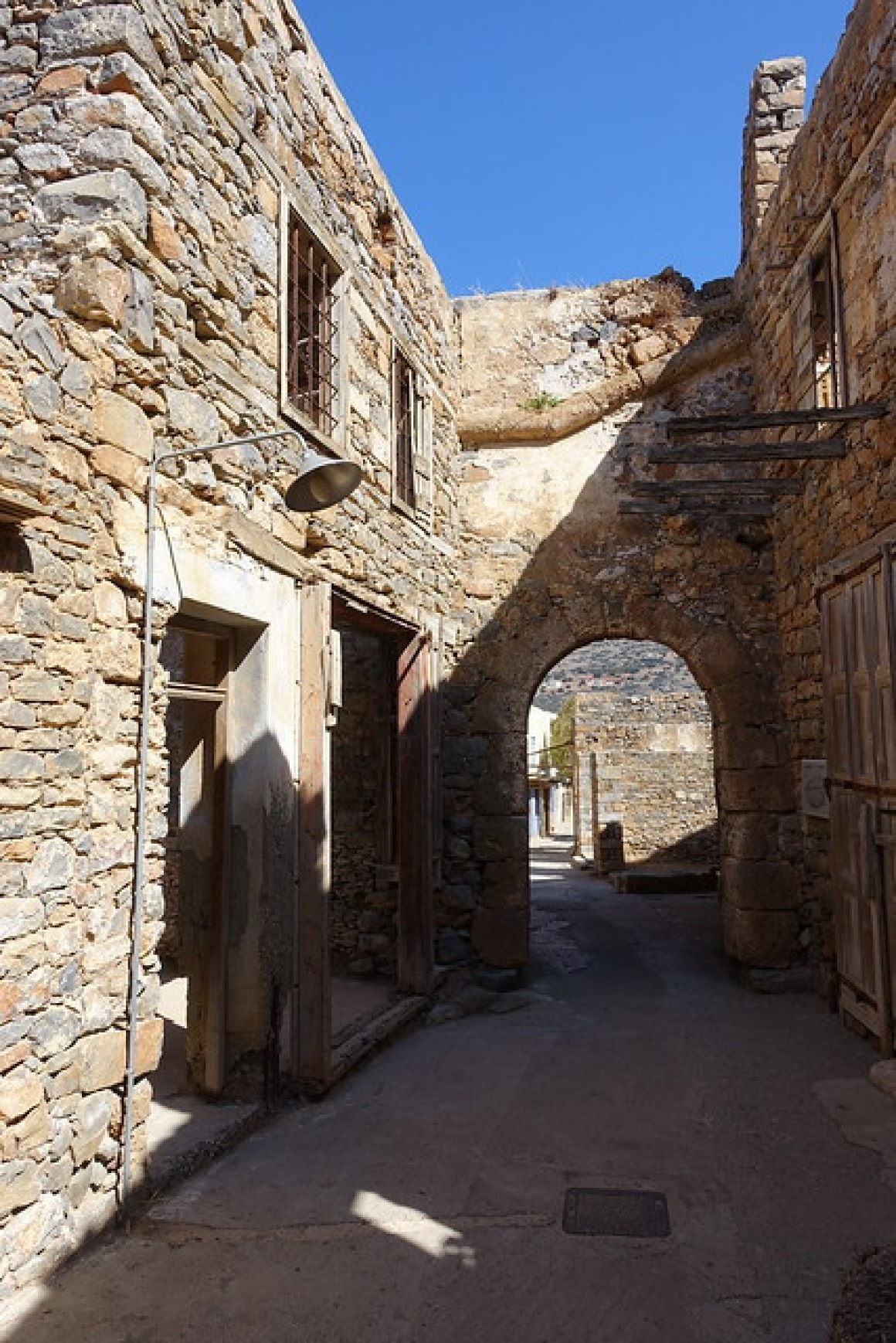
 'Spinalonga' - Attribution: thirau
'Spinalonga' - Attribution: thirauStrolling the perimeter path, I come across the ruins of fortified towers and the great bastion of Saint Francesco. Informative plaques show old maps of the fortress. One particular spot gives me goosebumps: a section of wall where the Venetian lion of St. Mark was once carved, now weathered away – a silent witness to the power that built this place. I imagine the Venetian commander here in its heyday, confident that Spinalonga was unassailable, not knowing it would eventually host a very different community within.
Village of Outcasts
In 1903, Crete's autonomous government made a controversial decision: to establish a leper colony on Spinalonga. Leprosy (Hansen's disease) was greatly feared and stigmatised, and those afflicted were rounded up from Crete and later from all over Greece and shipped to Spinalonga to live out their days in quarantine. As I wander the roofless stone houses and narrow lanes, it's hard not to feel the weight of that tragic chapter. These houses, once perhaps Ottoman residences from when Muslim families lived here, were repurposed to shelter the sick. I pass by the Dante Gate (named by patients after Dante's Inferno – for them, entering Spinalonga was like stepping into hell). Many must have arrived terrified, torn from families, anticipating a death in isolation.
Yet, amidst the tragedy, a community formed. I see remnants of daily life: a rusted hospital bed frame in what was the clinic, the shells of shops – the leper colony had cafes, a bakery, even a taverna – an attempt to maintain normalcy. There's the small church of St. Panteleimon where sufferers sought solace and lit candles to the patron saint of healing. In the shade of a courtyard, our guide recounts how supplies came by boat weekly and how occasionally a boatman might compassionately ferry a secret letter to a loved one on the mainland. The lepers were cut off but not completely forgotten. Some doctors and nurses volunteered to live among them, and over time, those with leprosy created a structured society with elected leaders to liaise with authorities.
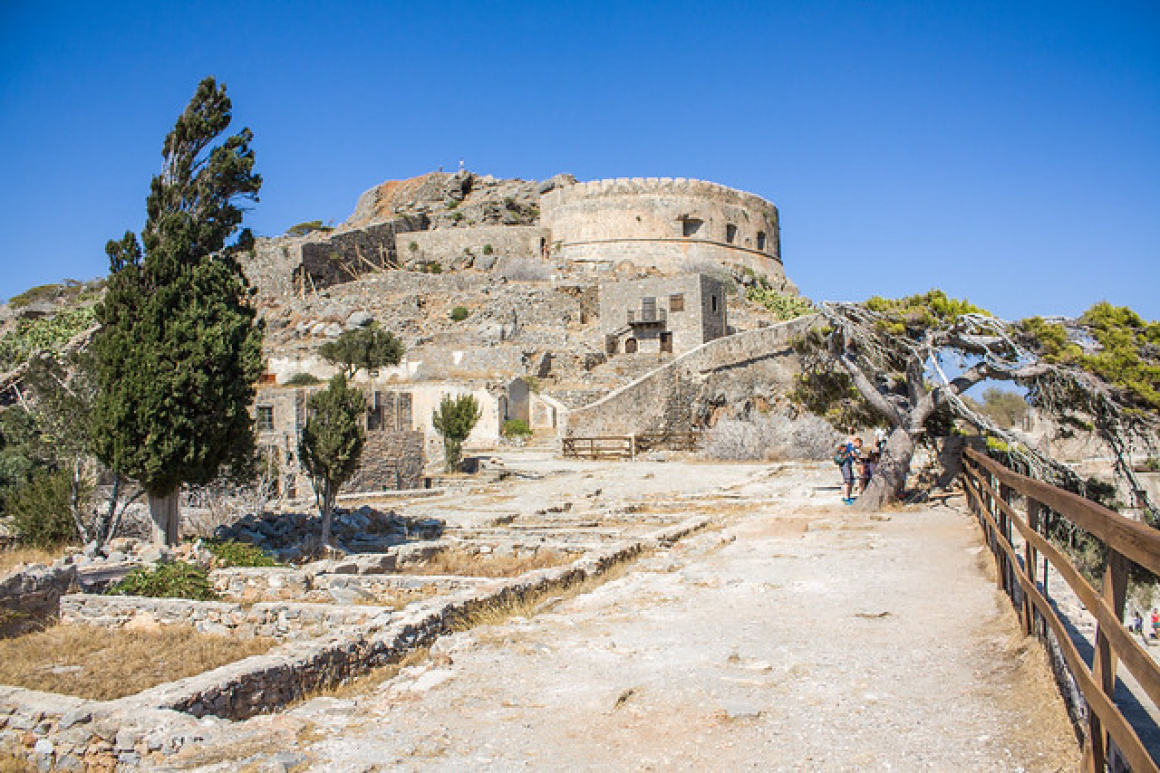
 'Spinalonga' - Attribution: Shadowgate
'Spinalonga' - Attribution: ShadowgateOne cannot talk of Spinalonga's leper colony without mentioning Victoria Hislop's novel “The Island” (2005). Though I read it years ago, being here brings scenes from the book alive – the fearful first arrival of the protagonist's family, the bittersweet loves and losses on the island, the collective joy in 1957 when a cure was found and Spinalonga's lepers could finally leave. Indeed, Spinalonga was one of the last leper colonies in Europe, closing in 1957 once treatments became available. Standing by the derelict hospital building, I reflect that those final days on the island must have been surreal – patients learning they'd been cured, yet some with no family to return to after decades away. Some older Cretans today still remember the celebration when the last Spinalonga inhabitant stepped off the island and the gates were symbolically closed.
Exploring the Ruins
Spinalonga isn't a large island – you can explore the main sights in an hour or two. I make sure to climb up to the top of the fortress, along a zigzag path to the highest bastion. From here, the panoramic view is stunning. To the north, the open sea; to the south, the sheltered bay of Elounda and the hills of Crete's mainland. On the summit, ruins of Venetian gunpowder magazines and Ottoman lookout posts intermingle. I find a quiet spot on the crumbling wall to sit. A gentle sea breeze blows, and I can hear the distant hum of a tourist boat approaching with its guide's voice faint on a loudspeaker. But in my little perch, I tune that out and imagine the silence of Spinalonga after 1957 – abandoned for decades, left to the seagulls and the ghosts.
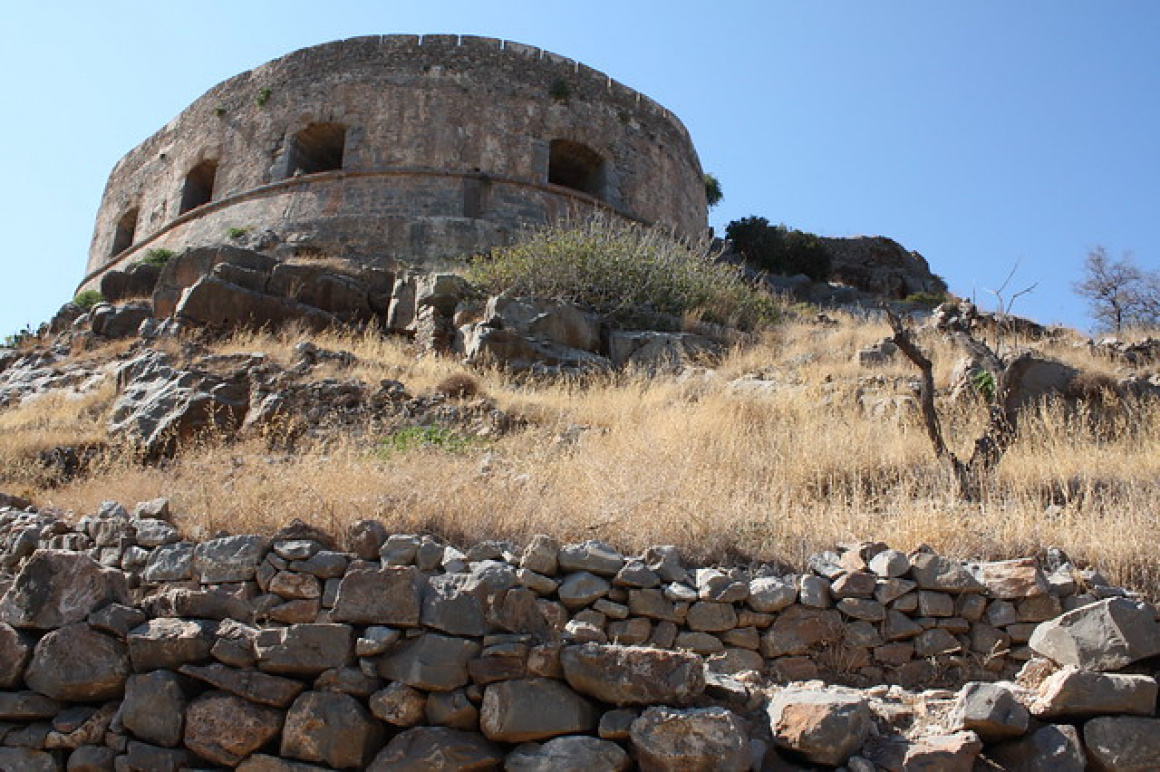
 'Spinalonga' - Attribution: Shadowgate
'Spinalonga' - Attribution: ShadowgateIt's not a heavy feeling though. Actually, Spinalonga inspires me by how resilient people can be. The leper community, despite immense suffering, managed to create meaning and hope in their lives here. They planted gardens, married, raised children (if a baby was born disease-free, it was taken away to “the healthy world” – another heartbreak). Walking the main street, once nicknamed “Main Street of the Unfortunate”, I see it now filled with visitors snapping photos. How far we've come – a place of sorrow now a place of learning and remembrance.
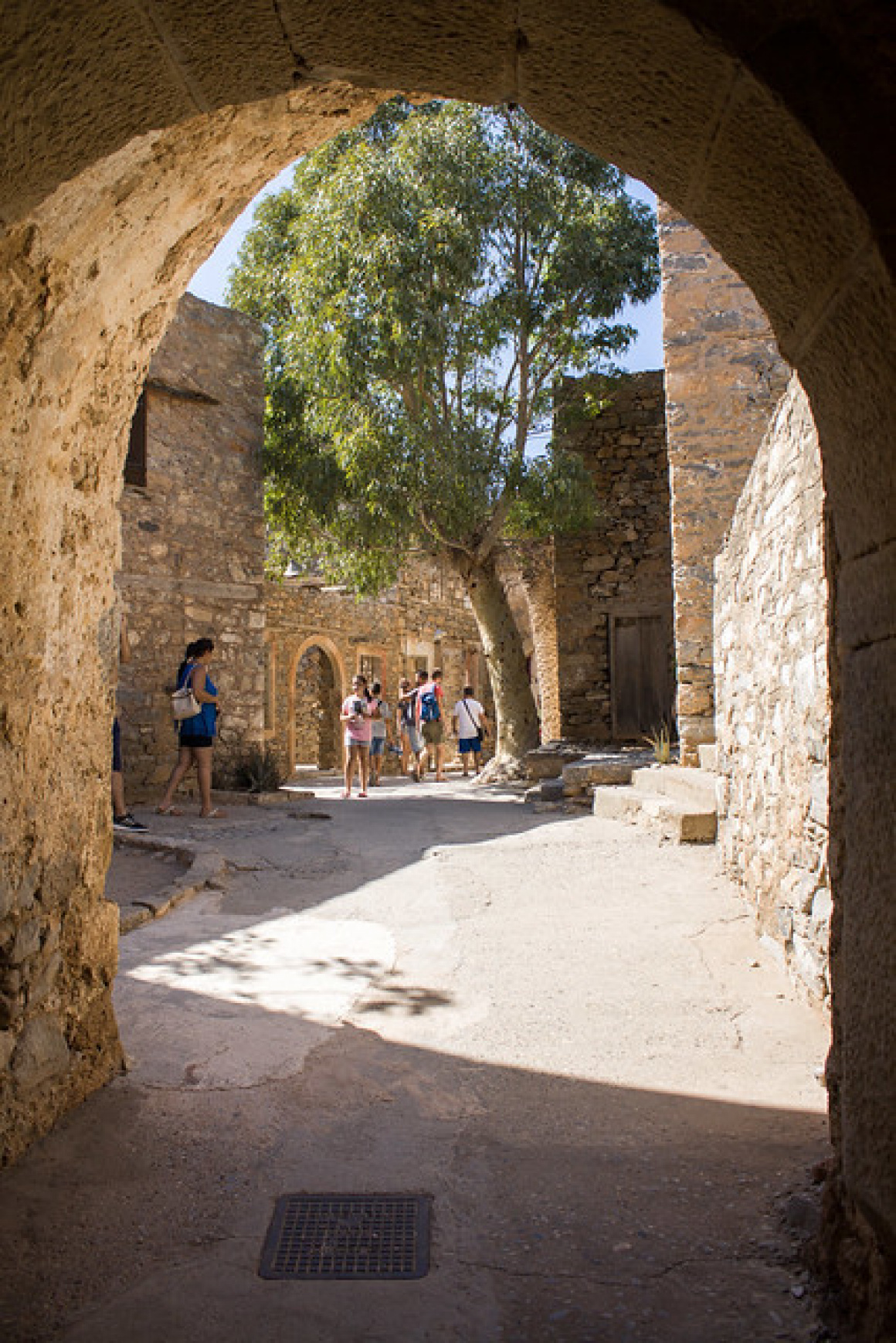
 'Spinalonga' - Attribution: Shadowgate
'Spinalonga' - Attribution: ShadowgateTips for Visiting
Ferries to Spinalonga run frequently in summer from Plaka (the nearest village, just a 5 minute boat ride), Elounda (~15 minutes), and Agios Nikolaos (longer excursion). I prefer from Plaka – it's a short, pretty crossing and you can go early before crowds. Mornings or late afternoons are best for softer light and fewer people, especially in peak season when midday can see many tour groups. There is an entrance fee to the island (a few euros) payable when you land or included if you're on a guided tour. Wear good shoes – paths are uneven and you'll be clambering over stones if you venture into house ruins. A hat, water, and sunscreen are musts; summers are hot and there's minimal shade aside from some olive trees near the church and the shadow of fort walls.
Allow about 1-2 hours on Spinalonga. Some boats give you less time, which can feel rushed if you like to absorb slowly. If you're a keen history buff, either go independently or ensure your tour provides ample island time. There's no food or drink sold on Spinalonga (understandably, given preservation), but you can bring a snack to eat at one of the resting spots. Remember to carry all trash back out – we want to keep this place pristine.
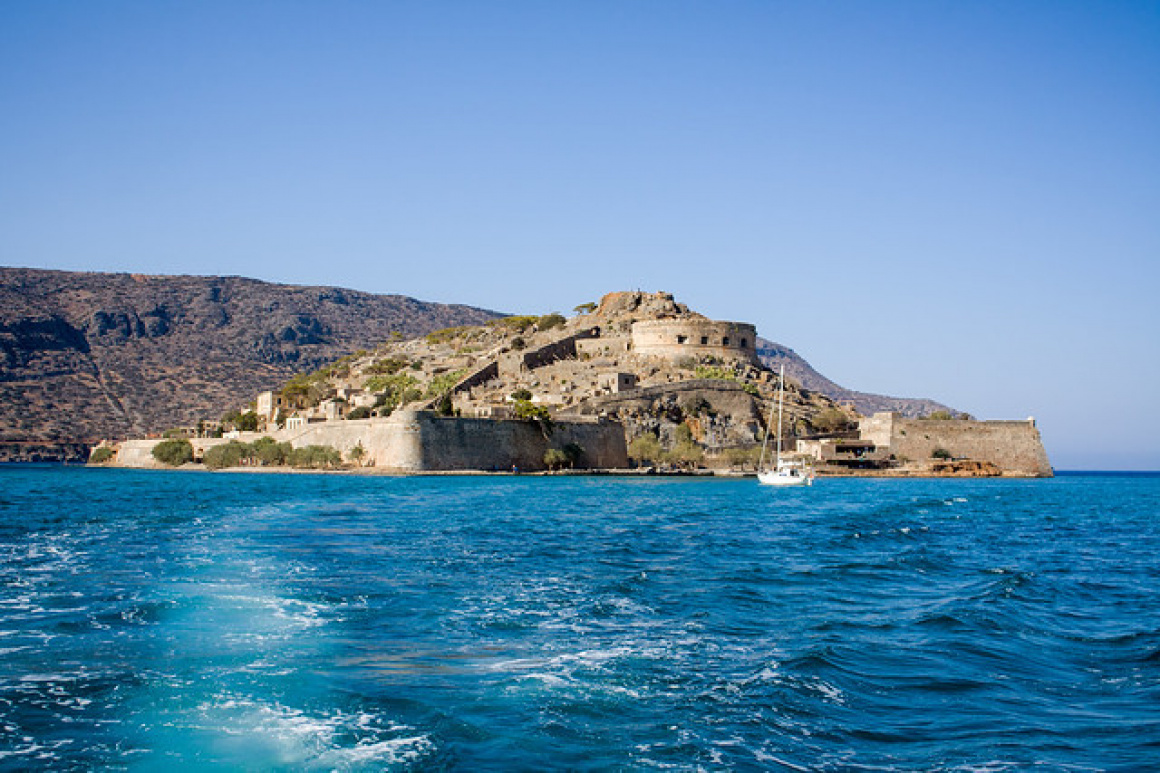
 'Spinalonga' - Attribution: Shadowgate
'Spinalonga' - Attribution: ShadowgateBack on shore, especially if you depart from Plaka, do take time to enjoy this quaint fishing village. It has splendid seafood tavernas lining the waterfront. Often, I treat myself to a late lunch at Taverna Spinalonga or Maria's in Plaka – feasting on grilled octopus and Greek salad while gazing at the island across the narrow strip of sea, letting the experience sink in. It's both eerie and beautiful to dine in view of Spinalonga's walls and think about how not so long ago, people on that island yearned for the life I'm living right now – sitting free, healthy, by the sea, enjoying simple pleasures.
Modern Connections
Spinalonga's story resonates even today, especially after the world faced quarantines in recent times. It's a sobering parallel – though incomparable in scale and severity, it underscores empathy for those isolated by illness. There was even talk of pushing for Spinalonga to become a UNESCO World Heritage Site, given its historical significance and well-preserved fortress architecture. It truly deserves that status in my opinion, both as a memorial to human suffering overcome by compassion and as a unique confluence of Venetian and Ottoman military design.
Before leaving, I wander one last time along the pebbled shore by Spinalonga's jetty. The water is crystal clear; I see little fish flitting among sunken stones. Just above, the “lepers' beach” where supplies were offloaded – one can almost picture crates of food being hauled up, or new arrivals touching the island and knowing it would be years before they'd touch Crete's soil again. With a final look at the inscription by the gate that lists Spinalonga's closure date, I step back onto the boat. As it pulls away, I watch the island recede, its formidable fort now silent. Tourists line the deck, reviewing photos on cameras, chatting about the next stop. I remain quiet for a bit, paying a mental tribute to all who lived and died there.
And then, as the sun glints off the fort walls and the boat skipper hums a little Cretan tune, I shift my thoughts to the evening ahead. Perhaps a stroll in Elounda or a dip in my hotel's pool, certainly a sunset toast to Crete's incredible history. Spinalonga leaves a mark on the heart – a mix of admiration, sorrow, and ultimately hope. Visiting it isn't just a tour, it's an experience of empathy and reflection I think everyone should have when in Crete.
Where to Stay near Spinalonga
Phāea Blue - Directly across from Spinalonga, this coastal retreat offers a fresh fusion of local Cretan style and modern comforts. Its 47 stone-built bungalows and suites—several with private heated pools—offer panoramic views of the island, and a private pebble beach adds an extra layer of exclusivity. Mornings begin with a sunrise that lights up Spinalonga, and evenings highlight traditional Cretan culture through themed events. The beachside taverna “Blue Door” is an especially memorable spot for fresh seafood while the fortress glows across the water, perfectly framing the postcard-like scene of Plaka and Spinalonga.
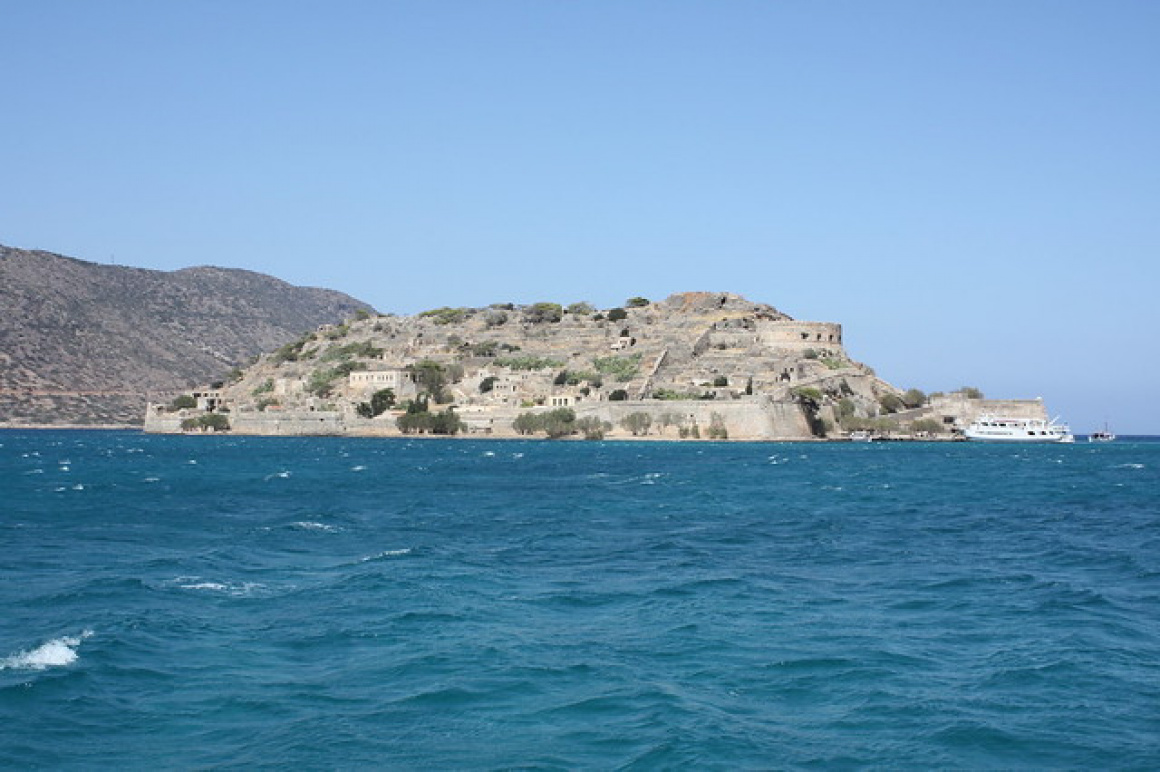
 'Spinalonga' - Attribution: Shadowgate
'Spinalonga' - Attribution: ShadowgateDomes of Elounda - Another luxury offering, Domes of Elounda is an all-suites-and-villas resort slightly to the south of Plaka. Part of Marriott's Autograph Collection, it seamlessly blends modern opulence with touches of Greek elegance – think domed ceilings and earth-toned materials. Many suites come with outdoor jacuzzis or pools, and again, Spinalonga views are a highlight. The resort emphasises privacy and relaxation – ideal for honeymooners or families, with an excellent kids' club too. The private beach is small but lovely, and their focus on gastronomy means on-site dining is top-notch.
Elounda Akti Olous - If you prefer a more low-key and budget-friendly stay, Elounda Akti Olous is a charming adult-only hotel in the town of Elounda (about 5km from Plaka). It's right by the water – in fact, its restaurant literally sits on a pier over the sea. The rooms are contemporary and bright, albeit not huge, and some have sea views. What stands out is the rooftop swimming pool and bar: from up there, you get a panoramic look over Elounda Bay and can catch a glimpse of Spinalonga in the distance while sipping a cocktail. It's a friendly, family-run place where staff remember your name. You can easily walk into Elounda's center for other dining options or hop on the bus to Plaka to catch a Spinalonga boat. Akti Olous gives you a mix of convenience, comfort, and that seaside holiday feel without breaking the bank.
Whether you opt for ultra-luxurious resorts or a cosy hotel, staying in the Elounda/Plaka area ensures you have Spinalonga at your doorstep. Phāea Blue and Domes of Elounda will pamper you while keeping the island fortress in sight at all times – literally weaving Spinalonga into your vacation memories each morning and night. Meanwhile, the smaller hotels in Elounda like Akti Olous offer warm hospitality and easy access to local life – you might chat with locals about Spinalonga's history over coffee at the square. All these options allow you to conveniently explore Spinalonga (and the wider Agios Nikolaos region) and then unwind in style, whether that style is 5-star plush or intimate and homely. Spinalonga's story stays with you – and having a comfortable haven to reflect on it, with maybe a view of the island in the dusk, is something quite special.
